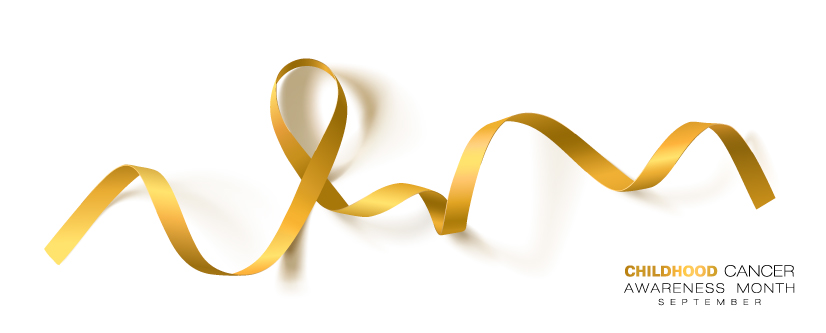Childhood Cancer Awareness Month is recognized every September to help shine a light on the realities of pediatric cancer and raise awareness of the important work being done to make a difference for the children who are diagnosed with cancer. September 15 also marked the start of Hispanic Heritage Month. As a Latin-American physician who has spent more than 33 years in pediatric care, the intersection of these two campaigns holds significant importance to my identity as a native of San Francisco and my formative childhood years in Managua, Nicaragua. This life journey has sharpened my perspectives and influenced my work.

“Children cannot be considered small adults when it comes to cancer treatment.”— NORMAN J. LACAYO, MD
Tweet this quote
Pediatric cancer is a complex disease. The best outcomes depend on a combination of early detection, effective treatment, supportive care, and ongoing research to improve treatments and patient outcomes. Children cannot be considered small adults when it comes to cancer treatment.
There are unique circumstances that impact our ability as physicians to accelerate these outcomes for our pediatric patients, their families, and caregivers. For many families with children undergoing acute care services, there are many variables that care providers must navigate, ranging from location, to income, to education. And within those care decisions are cultural considerations that health-care providers must understand when working with patients and families from different ethnic, racial, and socioeconomic backgrounds.
Pediatric patients with cancer and their families also face challenges beyond illness itself, including access to care, economic and psychological stressors, and resource availability. One of the keys to advancing pediatric cancer treatment is a focus on decentralized care models that support treatment closer to a patient’s home.
Setting the Stage for the Right Conversations About Pediatric Cancer
From a macro perspective, global pediatric cancer incident rates are low compared with their adult counterparts. Yet this vulnerable demographic faces more obstacles to equitable care, as noted here:
- The adult setting found in most treatment facilities is not well suited to the unique physical, physiologic, or psychological requirements of children. We cannot approach pediatric oncology with a one-size-fits-all approach.
- Most drug development is for adult patients with cancer. Although that is slowly changing, pediatric patients cannot be left out of the conversation.
- Children face different challenges when it comes to accessing care. For example, they cannot drive to receive treatment or consent to care and are not financially independent. Pediatric oncology is often a family affair.
This is the reality—and it adds complexity to the conversation. Additionally, access to treatment and equity in care remain systemic problems throughout the country. Exacerbating this great divide are several personal and structural barriers, such as language, education, literacy, and economic challenges. Further compounding these issues is also a reluctance of some to seek care because of disinformation, cultural practices, and possible discriminatory experiences with care providers. As a result, many people view treatment as a luxury rather than a necessity.
“At Stanford Medicine Children’s Health, we recognize the need to meet our patients where they are.”— NORMAN J. LACAYO, MD
Tweet this quote
Many of our pediatric patients with cancer at Stanford Medicine Children’s Health come from local Hispanic communities and various countries within Latin America. Although I enjoy forging meaningful relationships with all my patients and families, there’s something deeper that resonates in my conversations with Latino patients and families: shared experiences.
Many parents and caregivers have expressed an apprehension to participate in the medical care system because of previous experiences at other treatment facilities. Having felt either dismissed or misunderstood, many find it comforting to be treated by someone who looks like them or speaks like them. Yet only 5.8% of all physicians in the United States are of Latin-American ancestry,1 creating a disproportionate gap between Hispanic doctors, of diverse ethnicity, race, and national origin, and more than 62 million Americans of Latin-American ancestry.2
Although there is still more work to be done with diversity, equity, and inclusion within health care, the delivery of specialty care and education closer to home can mitigate many preconceived notions and fears within some of these communities.
Decentralized Care Models Bridge the Gap in Equitable Care
The idea of decentralized care isn’t new. For many years, communities depended on local doctors and clinics for care. For many immigrants—such as individuals and families from both Hispanic and Latin American countries—this might often be the only model they’ve known.
The diaspora of the Hispanic population within the United States reaches all four corners of the country, with many living beyond the edge of an income-rich city infrastructure, which typically includes research and support facilities. This means geography can be an additional barrier to adequate care for families and caregivers of pediatric patients with cancer.
“The movement to a decentralized specialty care model can improve cancer mortality rates among children in underserved communities.”— NORMAN J. LACAYO, MD
Tweet this quote
Decentralized care models increase access to care, reduce health equity disparities, and improve mortality rates of pediatric patients with cancer—especially for those from rural communities. Economic constraints, job security, and familial support all play a role in a patient’s ability to receive care. Often, these factors are overlooked when health-care organizations solely allocate specialty resources to facility-based care—facilities that can be hundreds or even thousands of miles away from patients and their families.
At Stanford Medicine Children’s Health, we recognize the need to meet our patients where they are. We are a part of a consortium of institutions working to promote and accelerate equity in development of therapies for children with cancer. That’s why we are currently developing a group of clinicians to flip the traditional model of care and amplify our work outside the San Francisco Bay area. We aim to bring research and services closer to those who may not be able to easily get to us.
A decentralized model can provide several advantages that help patients and families access quality oncology care, including the following:
- Provide medical services closer to smaller communities, particularly in rural or underserved areas, where access to health-care facilities may be limited
- Leverage local talent and resources to address language and cultural considerations to help physicians provide quality care
- Tailor health education and awareness campaigns to community needs and cultural nuances, dispelling misconceptions and disinformation as well as improving medical literacy
- Take advantage of advanced technology such as telehealth to enhance one-to-one communication and intervention. By remotely monitoring patients during treatment, providers are able to intervene promptly and provide necessary support, potentially reducing complications and mortality
- Help patients access clinical trials more easily and provide access to cutting-edge treatments and therapies that may lead to better outcomes
Bringing Cancer Care Closer to Home
The movement to a decentralized specialty care model can improve cancer mortality rates among children in underserved communities. By spreading specialized medical services and resources to remote locations, we can improve patient outcomes and quality of care for both patients and families.
This decentralized approach enables health-care providers not only to bridge the existing gaps in treatment, but also to provide tailored and culturally sensitive care that fosters a sense of autonomy and collaboration between clinicians and communities. This has the potential to provide every child diagnosed with cancer the chance to live a long, healthy life.
DISCLOSURE: Dr. Lacayo reported no conflicts of interest.
REFERENCES
1. AAMC: Diversity in medicine: Facts and figures 2019. Figure 18. Percentage of all active physicians by race/ethnicity, 2018. Available at https://www.aamc.org/data-reports/workforce/data/figure-18-percentage-all-active-physicians-race/ethnicity-2018. Accessed September 8, 2023.
2. USA Facts: Our changing population: United States. Available at https://usafacts.org/data/topics/people-society/population-and-demographics/our-changing-population/. Accessed September 8, 2023.
Dr. Lacayo is a pediatric hematologist-oncologist at Stanford Medicine Children’s Health.


